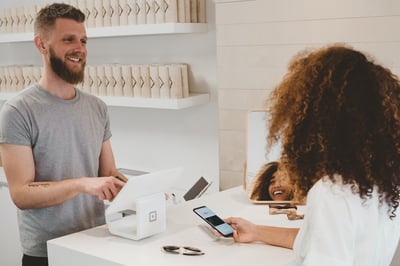February 20, 2024
 by Alan Santillan / February 20, 2024
by Alan Santillan / February 20, 2024

Globalization has brought a more competitive environment to any and every industry out there.
Good customer service is essential for any company, but how crucial is it? Customer service channels were not at all common a few decades ago, but today, they are important for any thriving company.
Cloud-based company phone systems have increased client expectations. With more customer service software tools at your disposal, the ceiling for a great customer journey is higher than ever.New customers cost more and are harder to up-sell than existing customers. With that in mind, here are some vital customer service statistics rounding out why it’s more important than ever to have a great customer experience strategy.
The main obstacle that most businesses have is that they lack a clear plan for developing a customer-centric interactive strategy that would enable them to take advantage of possibilities like customer service to increase brand equity.
of customers said a positive customer experience over a particular messaging channel significantly improved their brand loyalty.
Source: Nextiva
Did you know that almost two-thirds of consumers say they are more likely to forgive a mistake by a long-term favored brand than a brand they have only done business with for a year or less? Have a look at why good customer service is important.
of customers say they’re more likely to make another purchase after a great customer service experience.
Source: Salesforce
Poor customer service can have a negative impact on your company's reputation. When clients receive poor service, they frequently go to social media to express their dissatisfaction. The message is quite clear: In today's digitally linked world, you cannot afford to ignore these annoyances.
of Americans report “lack of effectiveness” as their top frustration with customer service reps.
Source: Statista
What customers anticipate and have experienced when dealing with a company might be better understood through customer feedback. With that customer data in hand, the business can focus on what matters most to its customers: making informed decisions.
Today, social media is a critical and rapidly growing contact channel within the entire customer service ecosystem. Since it’s a preferred mode for issue resolution by several customers -- due to its accessibility and brand connect, effective customer service will meet your customers’ needs and even give your company a competitive edge.
As technology continues to evolve, we’re seeing new ways that artificial intelligence (AI) can enhance the customer experience. Your support personnel may improve efficiency, respond faster to client queries, and even predict their requirements with the aid of chatbots and sentiment analysis.
Have a look at some customer service statistics with AI.
of businesses consider automation necessary in their customer experience strategy.
Source: Verint
Customer satisfaction is the key to growing your business. Whether you’re just starting a small business or growing your company to 1000 employees, the tools you use to build and engage with them in their experience are extremely important in helping the customer understand that they are your priority.
Intrigued about customer service tools? Explore knowledge base software to store and organize information for your business.
Alan arrived at G2 Crowd with a background in Logistics, Business Operations, and Services Marketing during the summer of 2018. With this experience, he continues to build and scale G2's offsite SEO presence through content promotion, development, and outreach.
Have you ever had an experience with a brand that completely wowed you? So much so that you...
 by Hannah Tow
by Hannah Tow
Consumer demand for personalized experiences is at an all-time high.
 by Keerthi Rangan
by Keerthi Rangan
In today's consumer-driven market, the modern customer demands personalized experiences that...
 by Pulkit Jain
by Pulkit Jain
Have you ever had an experience with a brand that completely wowed you? So much so that you...
 by Hannah Tow
by Hannah Tow
Consumer demand for personalized experiences is at an all-time high.
 by Keerthi Rangan
by Keerthi Rangan


